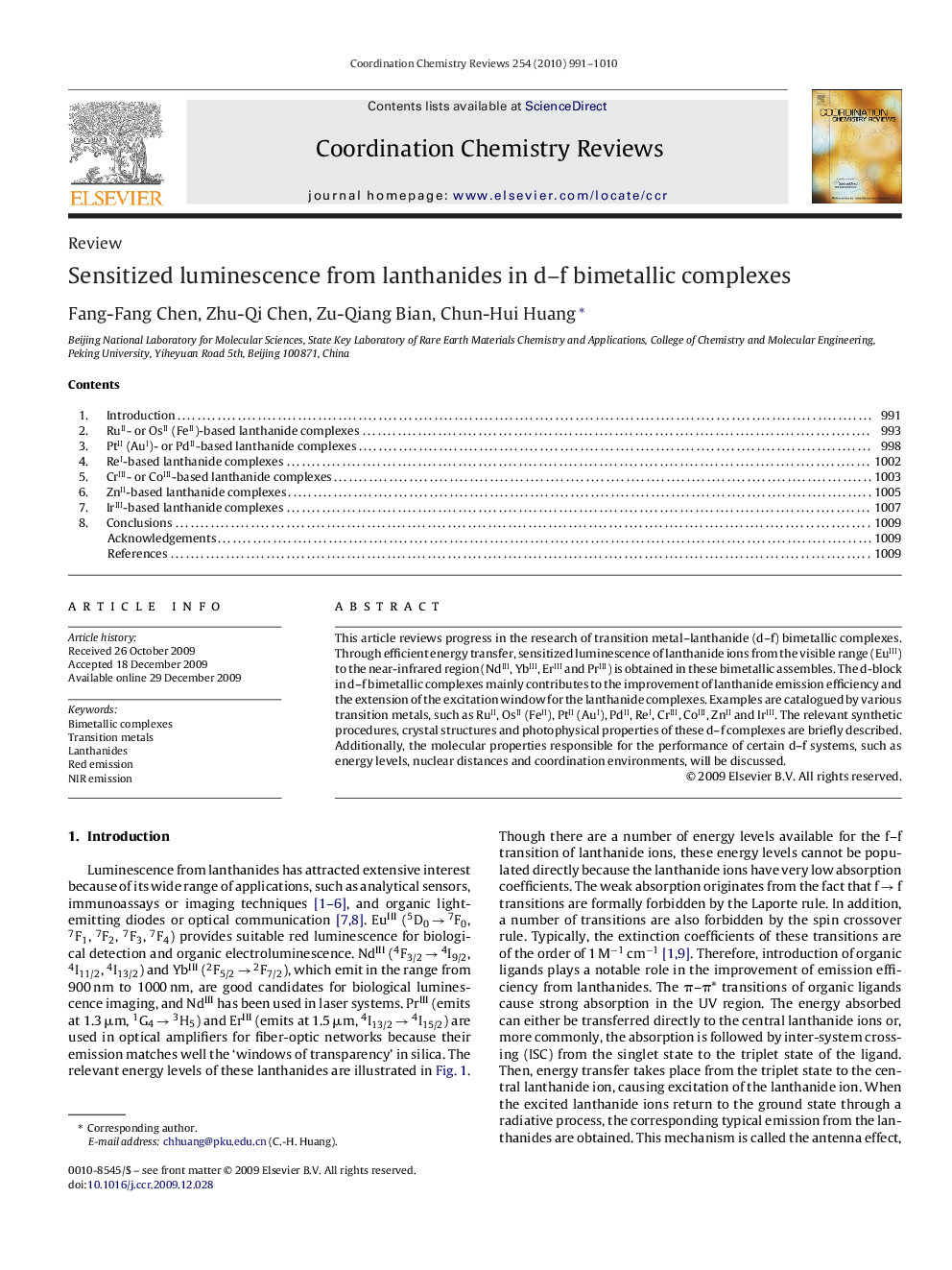| Article ID | Journal | Published Year | Pages | File Type |
|---|---|---|---|---|
| 1301165 | Coordination Chemistry Reviews | 2010 | 20 Pages |
This article reviews progress in the research of transition metal–lanthanide (d–f) bimetallic complexes. Through efficient energy transfer, sensitized luminescence of lanthanide ions from the visible range (EuIII) to the near-infrared region (NdIII, YbIII, ErIII and PrIII) is obtained in these bimetallic assembles. The d-block in d–f bimetallic complexes mainly contributes to the improvement of lanthanide emission efficiency and the extension of the excitation window for the lanthanide complexes. Examples are catalogued by various transition metals, such as RuII, OsII (FeII), PtII (AuI), PdII, ReI, CrIII, CoIII, ZnII and IrIII. The relevant synthetic procedures, crystal structures and photophysical properties of these d–f complexes are briefly described. Additionally, the molecular properties responsible for the performance of certain d–f systems, such as energy levels, nuclear distances and coordination environments, will be discussed.
